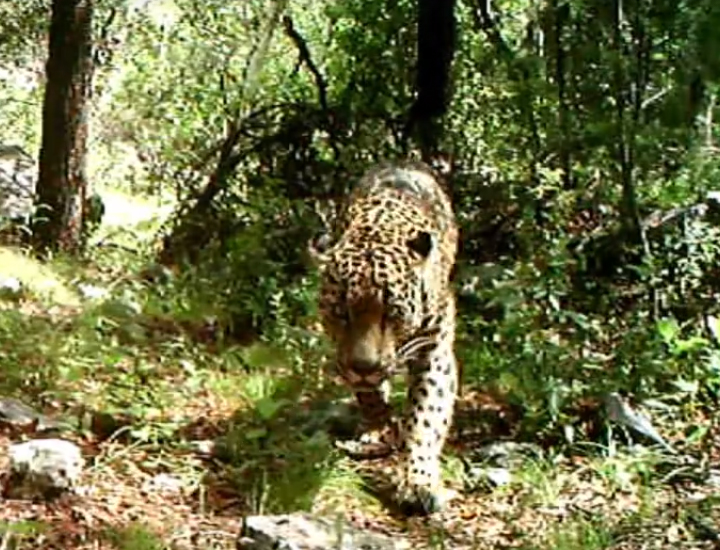When it comes to wild cats, Texas holds its fair share of bragging rights. The ocelot, margay, jaguarondi, and jaguar have currently or, more commonly, historically ranged northward from Mexico into the brushland south of San Antonio. Texas also claims the mountain lion and bobcat as current state residents. In fact, only one native wild cat living north of the Rio Grande and the Gulf of California is not found in Texas – the Canadian lynx.
While the last verified Texas record of a jaguar in the state dates from the turn of the century, and no evidence of the margay, looking something like a smaller ocelot, has been found in Texas since a specimen was noted at Eagle Pass over 100 years ago, we still have the occasional excitement today when a jaguarondi or ocelot is spotted. But when it comes to exceptional wild cat excitement, Arizona took the spotlight last month when Conservation CATalyst and the Center for Biological Diversity released new video of the only known wild jaguar currently in the United States.
Captured on remote sensor cameras in the Santa Rita Mountains just 25 miles from downtown Tucson, the dramatic footage provides a glimpse of the secretive life of one of nature’s most majestic and charismatic creatures. The camera project is part of ongoing efforts to monitor mountain ranges in southeastern Arizona for endangered jaguar and ocelot. For the past three years, wildlife biologists with Conservation CATalyst have been tracking the jaguar, collecting data in the rugged mountains using a specially trained scat detection dog, and refining camera sites which were able to capture still photos and ultimately led to this exciting video of the elusive and notoriously solitary cat that only tolerates another for reproduction.
This jaguar, known as El Jefe in Tucson, is the only verified jaguar in the United States since a cat known as Macho B was euthanized as a result of capture-related injuries in March 2009. The last verified female jaguar in the country was shot by a hunter in 1963 in Arizona’s Mogollon Rim.
The third-largest cats in the world after tigers and lions, jaguars once lived throughout the American Southwest, with historical reports on the South Rim of the Grand Canyon, the mountains of Southern California, and as far east as Louisiana. They disappeared from their U.S. range over the past 150 years, primarily due to habitat loss and historic government predator control programs intended to protect the livestock industry.
For more information about the work done by Conservation CATalyst, visit conservationcatalyst.com.
Wild Getaway Note:
While odds are certainly slim you’ll catch a glimpse of El Jefe, a trip to Tucson can get pretty wild at the Arizona-Sonora Desert Museum. The 98 acre space includes a zoo, botanical garden, art gallery, natural history museum, and aquarium, 21 interpreted acres with two miles of walking paths through various desert habitats, 230 animal species, 1,200 types of plants, and more. The museum also features a raptor “free flight” where untethered birds of prey will fly right by you and, on the other end of the bird scale, there is also a hummingbird aviary. For more information, visit desertmuseum.org.









